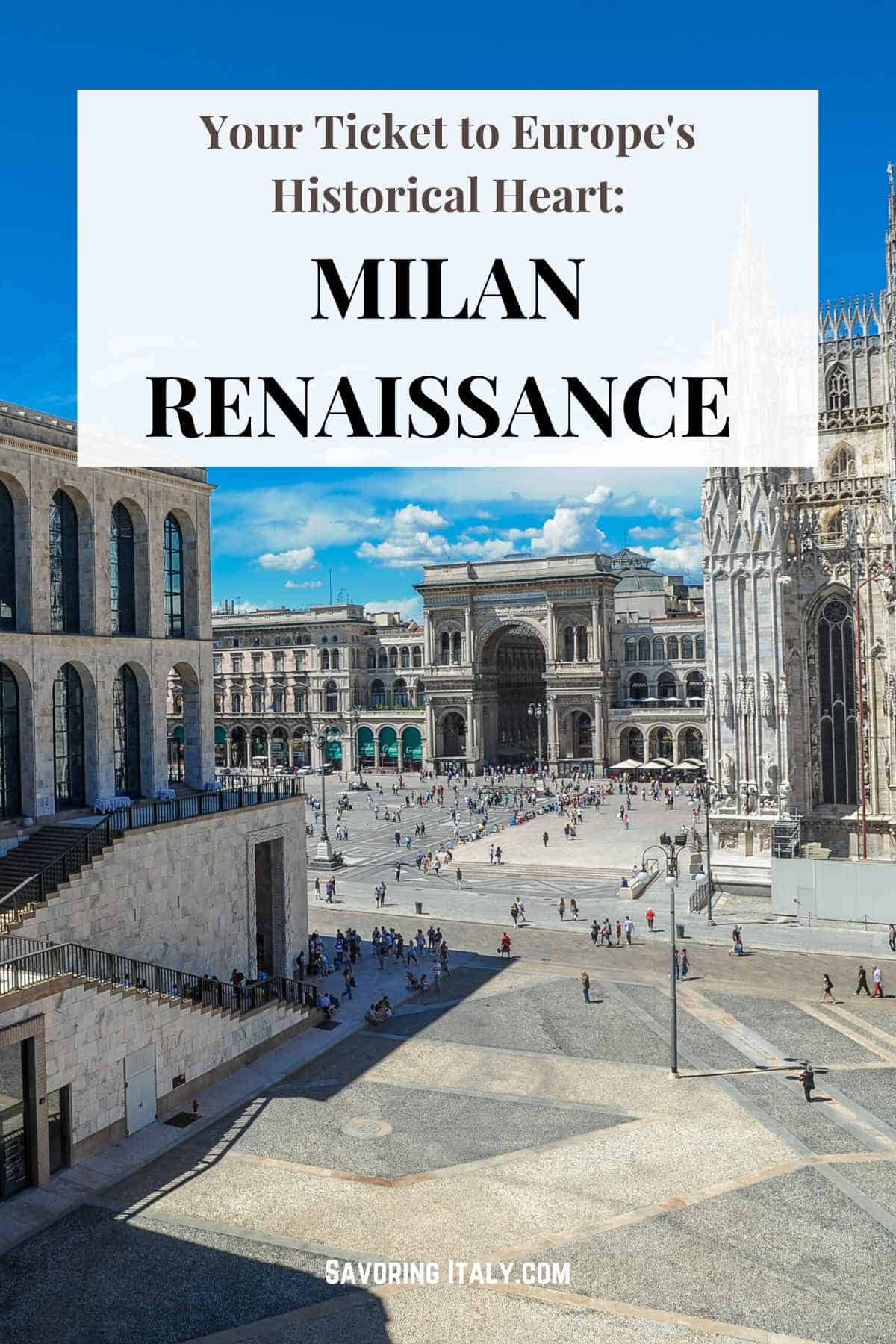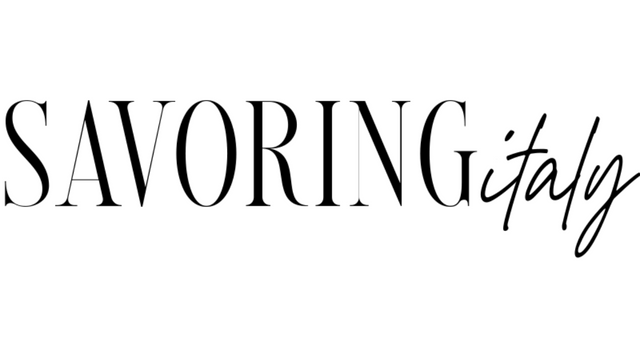This article will take you through Milan's Renaissance, from the 14th to 17th century, its huge role in Europe's economy and politics and how that time still shapes Milan today. We're also going to look at the major players in art and architecture and give you some helpful travel tips on how, when and where to see them on your next trip to Italy.

This article contains affiliate links which supports us at no extra cost to you.
Jump To
The Milan Renaissance
Renaissance, 14th to 17th century. Milan? Big player in Europe's economy and politics. It got rich off agriculture, silk, and weapons, becoming a key trade link between Italy and Northern Europe. This wealth let big shots like Ludovico Sforza (his name will come up a lot!) fund masterpieces, like Leonardo da Vinci's "The Last Supper." Milan's spot, near the Alps in the Po Valley, was perfect. It rose as a major city-state, up there with Florence, Venice, and Rome. This era? Huge for changing European thought, art, architecture, culture. And Milan? Right in the thick of it.

Historical Context
Renaissance Milan was, as all major cultural shifts tend do be, all about change and clout, thanks to its spot and money. Right in northern Italy, near the Alps, it was big even before the Renaissance, tracing back to Roman times. Its wealth came from solid agriculture, silk, and weapon making, making it a key trade player between Italy and Northern Europe.
The Sforza family, especially Ludovico Sforza, they were the game changers in Milan. Military leaders who took over after the Visconti and Della Torre families. Under the Sforzas, from 1450 to 1519, Milan hit its peak. Big economic boom, especially in silk and wool. They poured major money into arts.
Before the Sforzas, the Visconti family were the big names. They took over from the Della Torre. Ruled till mid-15th century. The switch from Visconti to Sforza was a big shift in how Milan was run. Went from tight monarchy to a more people-powered setup, like during the Ambrosian Republic, even if just for a bit.

Key Figures of the Milan Renaissance
Leonardo da Vinci (1452-1519): Hands down, THE ultimate Renaissance guy. In Milan (and the rest of the world), he's best known for "The Last Supper," from the 1490s. Ludovico Sforza, the Duke, commissioned it. You'll find it in Santa Maria delle Grazie, Milan. Famous for its perspective and life-like biblical scene. But Leonardo wasn’t just about painting in Milan; he vigorously dabbled in engineering and science too and created some mind-blowing "technologies" that make us go wow, even today.
Donato Bramante (1444-1514): Big-time architect in Milan's Renaissance. His big deal was the church of Santa Maria presso San Satiro. He used trompe-l'œil to fake depth in tight spaces. A perspective trick that's still impressive.
Michelangelo Buonarroti (1475-1564): Mostly a Florence and Rome guy, but Milan felt his touch. His "Pietà Rondanini" is in Milan's Castello Sforzesco. Unfinished when he died, but still a key Renaissance piece in Milan.
Caravaggio (1571-1610): He came after the 15th-century Renaissance, but shaped the Baroque era. Known for his stark light and shadow and real human figures. Left a big mark on Italian art.

Cultural and Societal Impact
Regarding the Renaissance in European politics and business, Milan was absolutely significant. As aforementioned, farming, silk, and firearms were its main sources of wealth, and as a result of this, it became an important trader between Italy and Northern Europe. This enabled the wheels of a kind of capitalism which allowed a massive money influx and catapulted major elite names like Ludovico Sforza into the art world
Milan's Renaissance was a festival of ideas and artistic expression. strong emphasis on classical education and humanist principles. Painting, sculpture, architecture, and literature all reached new heights as a result. Milan began to concentrate more on people during this age, abandoning the traditional medieval practices.
Both painters and architects prospered. Think about Milan's Donato Bramante. He created brilliant work at Santa Maria presso San Satiro. A faux choir created using perspective. That's Renaissance architecture for you.
Renaissance is emblazoned all over Milan of today. The wealth of the period is seen in the architecture, art collections, and cultural venues. One contemporary example of Milan's Renaissance significance is Castello Sforzesco, Santa Maria delle Grazie. That era's ideas, art styles, they've shaped artists and thinkers all over, not just Italy.
Milan still feels the strong influence of the Renaissance's emphasis on humanism and creativity. It's now a hotspot for innovation, fashion, and design. All thanks to its Renaissance days as an art and thought center.

Visiting Milan's Renaissance Sites Today
Santa Maria delle Grazie & The Last Supper: Kick off at Santa Maria delle Grazie. Classic Renaissance architecture. Inside is that glorious Leonardo's "Last Supper" we kept bringing up. You DEFINITELY want to book ahead, it's a crowd-puller. Go early to dodge the masses.
CLICK HERE TO BOOK A LAST SUPPER TOUR
Santa Maria presso San Satiro: Close to the Duomo. Bramante's trompe-l'œil choir here is a real head-spinner. Don't skip the Bramantesque Sacristy and Agostino de’ Fondulis' Pietà.
San Maurizio at the Monastero Maggiore: Milan's own "Sistine Chapel." Bernardino Luini and others decked it out with incredible frescoes.
Castello Sforzesco: History and art, all in one. Since the Sforzas, it's seen a lot of changes. Highlights are Leonardo's faux pergola and Michelangelo's Pietà Rondanini.
Guided Tours: Really get into it with a walking tour. The "2-hour Milan Skip the Line The Last Supper and Renaissance Walking Tour" is packed with expert info on Renaissance art and architecture, plus fast-track access to "The Last Supper."
Cultural Experiences: Milan's not just Renaissance. Foodies, hit up Eataly for Italian treats. Fashion buffs need to go to the Armani Museum's - that's your spot. And the Pinacoteca di Brera is an art-lover's dream.
Nearby Excursions: Got time? Train it to Lake Como. Mountains, villages, calm – a perfect city break.

Recommended Milan Renaissance Tours
Check out these tours to see Milan like a pro:
Historical Walking Tour and The Last Supper Ticket:
Get on the Milan Historical Walking Tour, 'The Last Supper' ticket included. Skip the long lines to see Da Vinci's masterpiece. You'll walk through Milan, hitting up spots like the famous Renaissance mural and the Duomo. Prepare to be amazed.
Skip the line Castle and Renaissance Private Tour:
Milan's Castle and Renaissance Tour with fast-track is a deep-dive walking tour, off the usual tourist track. Led by a local expert, they'll school you on the Italian Renaissance, a standout chapter in art history. Get ready to see some stunning art and impressive Renaissance buildings.
Off-the-Beaten-Path Private Walking Tour:
Milan's Hidden Treasures is a 90-minute private walk. You'll see Milan's lesser-known spots. Check out San Bernardino alle Ossa, the hidden crypt of San Giovanni in Conca, and Santa Maria presso San Satiro, a Renaissance wonder.
More Articles About Italy!
If you enjoyed reading about Milan's Renaissance, then you're definitely gonna love these other articles about Italy too. Buon Viaggio!:



Leave a Reply